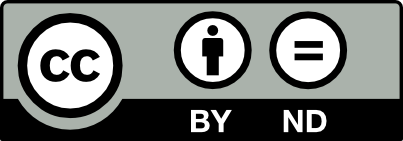Nous montrons que, étant donnés et , toute classe inversible modulo contient au moins un produit d’exactement trois nombres premiers, chacun étant inférieur ou égal à .
We prove that, if and are two parameters, then for any invertible residue class modulo there exists a product of exactly three primes, each one below , that is congruent to modulo .
Révisé le :
Accepté le :
Publié le :
DOI : 10.5802/jtnb.1024
Mots clés : Primes in arithmetic progressions, Least prime quadratic residue, Linnik’s Theorem
 CC-BY-ND 4.0
CC-BY-ND 4.0
@article{JTNB_2018__30_1_219_0,
author = {Olivier Ramar\'e and Aled Walker},
title = {Products of primes in arithmetic progressions: a footnote in parity breaking},
journal = {Journal de th\'eorie des nombres de Bordeaux},
pages = {219--225},
publisher = {Soci\'et\'e Arithm\'etique de Bordeaux},
volume = {30},
number = {1},
year = {2018},
doi = {10.5802/jtnb.1024},
zbl = {1435.11123},
mrnumber = {3809717},
language = {en},
url = {https://jtnb.centre-mersenne.org/articles/10.5802/jtnb.1024/}
}
TY - JOUR AU - Olivier Ramaré AU - Aled Walker TI - Products of primes in arithmetic progressions: a footnote in parity breaking JO - Journal de théorie des nombres de Bordeaux PY - 2018 SP - 219 EP - 225 VL - 30 IS - 1 PB - Société Arithmétique de Bordeaux UR - https://jtnb.centre-mersenne.org/articles/10.5802/jtnb.1024/ DO - 10.5802/jtnb.1024 LA - en ID - JTNB_2018__30_1_219_0 ER -
%0 Journal Article %A Olivier Ramaré %A Aled Walker %T Products of primes in arithmetic progressions: a footnote in parity breaking %J Journal de théorie des nombres de Bordeaux %D 2018 %P 219-225 %V 30 %N 1 %I Société Arithmétique de Bordeaux %U https://jtnb.centre-mersenne.org/articles/10.5802/jtnb.1024/ %R 10.5802/jtnb.1024 %G en %F JTNB_2018__30_1_219_0
Olivier Ramaré; Aled Walker. Products of primes in arithmetic progressions: a footnote in parity breaking. Journal de théorie des nombres de Bordeaux, Tome 30 (2018) no. 1, pp. 219-225. doi : 10.5802/jtnb.1024. https://jtnb.centre-mersenne.org/articles/10.5802/jtnb.1024/
[1] Über einige Grenzwertsätze, Wien. Ber., Volume 120 (1911), pp. 1253-1298 | Zbl
[2] Multiplicative number theory, Graduate Texts in Mathematics, 74, Springer, 2000, x+177 pages | MR | Zbl
[3] Estimates of some functions over primes without R.H. (2010) (https://arxiv.org/abs/1002.0442)
[4] On the arithmetic equivalent of analyticity of the Dirichlet -series on the line , Izv. Akad. Nauk SSSR. Ser. Mat., Volume 20 (1956), pp. 145-166 | MR | Zbl
[5] Elementary methods in analytic number theory, Rand McNally & Co., 1965, 242 pages (Translated by Amiel Feinstein. Revised and edited by L. J. Mordell)
[6] Hilbert’s inequality, J. Lond. Math. Soc., Volume 8 (1974), pp. 73-82 | DOI | MR | Zbl
[7] Multiplicative Number Theory: I. Classical Theory, Cambridge Studies in Advanced Mathematics, 97, Cambridge University Press, 2007, xvii+552 pages | MR | Zbl
[8] A note on Siegel’s zeros, Proc. Japan Acad., Ser. A, Volume 55 (1979), pp. 190-192 | DOI | MR | Zbl
[9] Additive Number Theory –Inverse Problems and the Geometry of Sumsets, Graduate Texts in Mathematics, 165, Springer, 1996, xiv+293 pages | Zbl
[10] Elementary methods in the theory of -functions, VI. On the least prime quadratic residue , Acta Arith., Volume 32 (1977), pp. 173-178 | DOI | MR | Zbl
[11] Ramanujan’s lattice point problem, prime number theory and other remarks, Hardy-Ramanujan J., Volume 19 (1996), pp. 2-56 | MR | Zbl
[12] Arithmetical aspects of the large sieve inequality, Harish-Chandra Research Institute Lecture Notes, 1, Hindustan Book Agency, 2009, x+201 pages | MR | Zbl
[13] Additive Combinatorics, Cambridge Studies in Advanced Mathematics, 105, Cambridge University Press, 2006, xviii+512 pages | MR | Zbl
[14] A multiplicative analogue of Schnirelmann’s theorem, Bull. Lond. Math. Soc., Volume 48 (2016) no. 6, pp. 1018-1028 | DOI | MR | Zbl
[15] On the least prime in an arithmetic progression and estimates for the zeros of Dirichlet -functions, Acta Arith., Volume 150 (2011) no. 1, pp. 65-91 | DOI | MR | Zbl
Cité par Sources :

